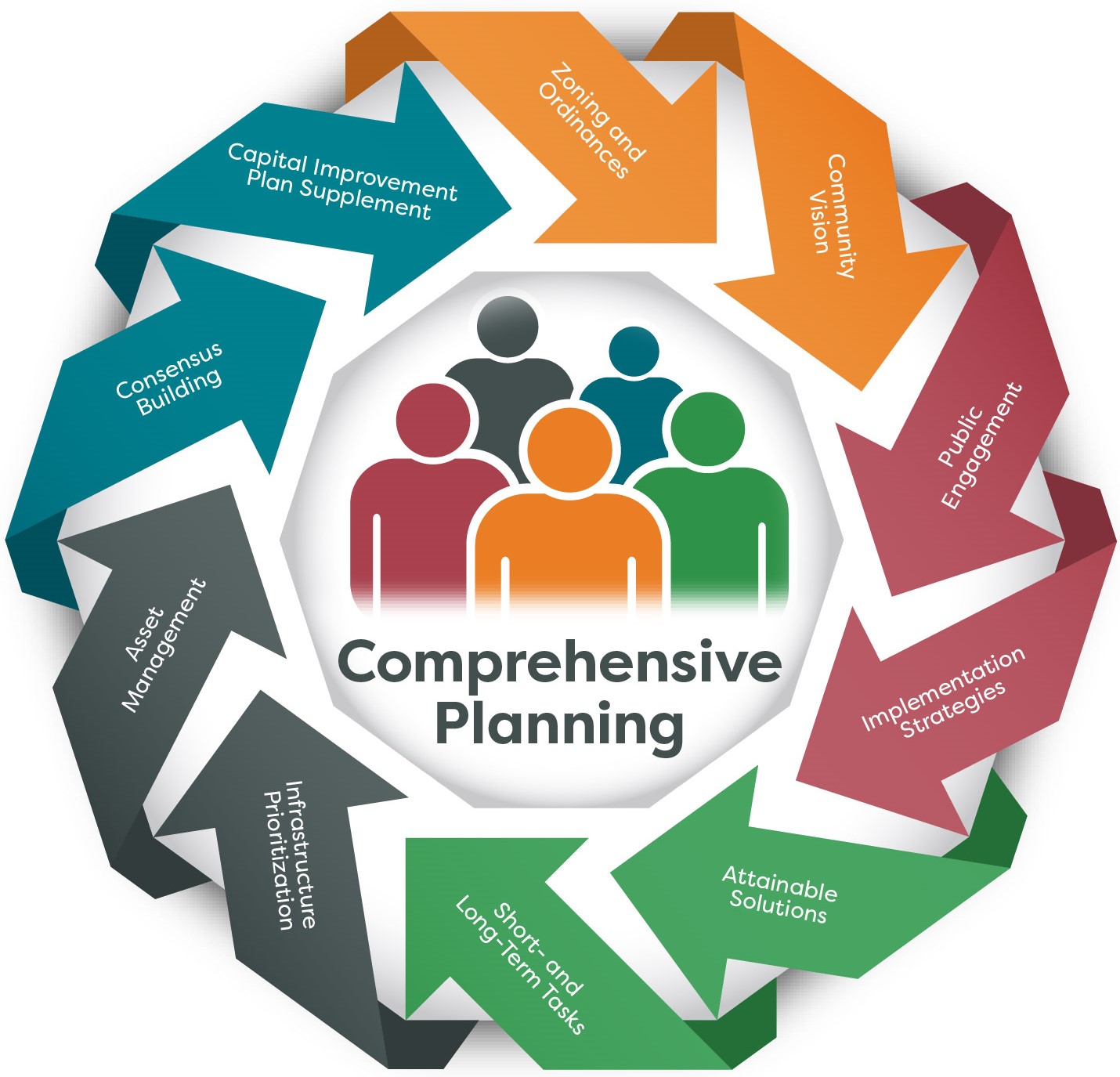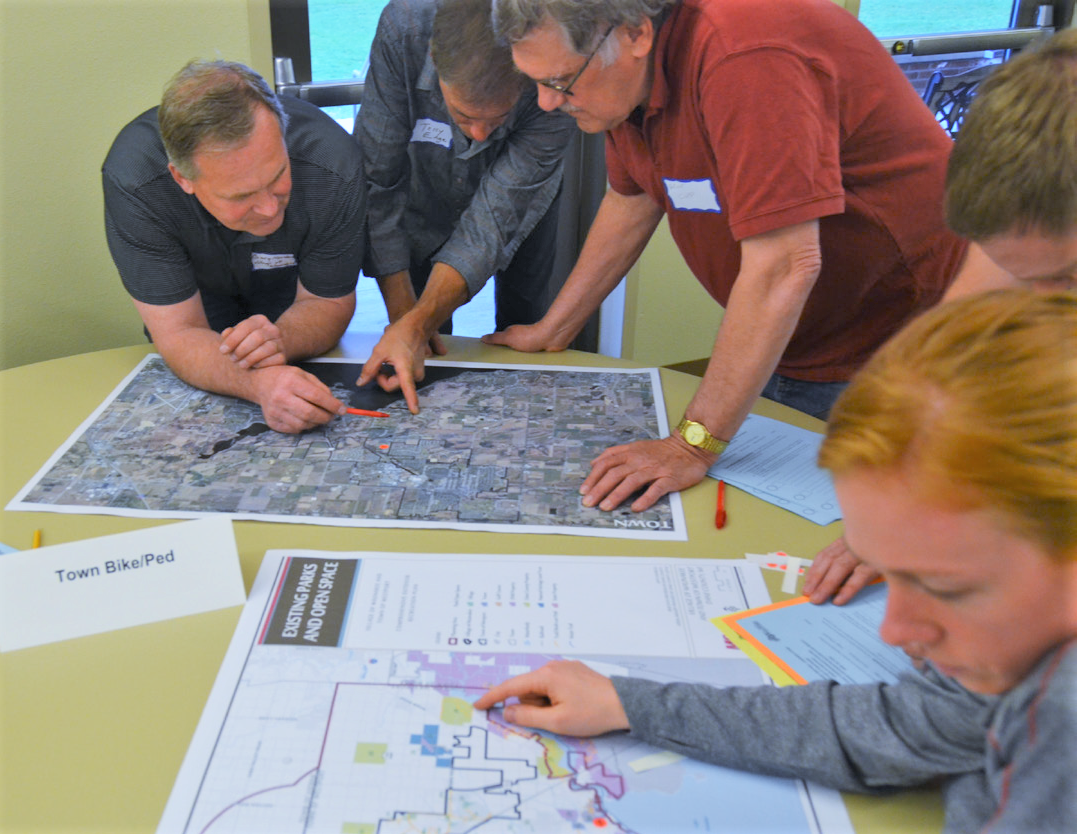The word comprehensive means complete. So, Comprehensive Planning by definition is “complete planning.” 
A community comprehensive plan is a 30,000-foot view of your community at a particular moment in time. It serves as a policy document, which establishes general guidelines for the physical, economic, and social development of a municipality. Although the plan itself is not a legal document, it lays a foundation and provides the rationale for decisions concerning legal documents such as zoning and subdivision ordinances. Zoning and subdivision ordinances are the tools that municipalities have in order to manage future growth policies established in the comprehensive plan. Therefore, it is critical for any community with land use regulations to have an adopted plan from which regulatory decisions may be justified. As residents and businesses come and go, and economic trends rise and fall, changes will occur. The purpose of a comprehensive plan is to establish a shared vision for the community to guide future actions and decisions.
A good comprehensive planning process has a robust engagement process that involves the general public, stakeholders and community officials. Engaging these groups in the process on the front end builds consensus and buy-in to support the implementation of the goals and strategies that come out of this planning process. Establishing implementation strategies that are not “pie in the sky,” but attainable solutions to challenges uncovered through analysis, investigation and communication during the planning process, is vital to transformative change in the community. The implementation strategies should be broken down into a stepped process of short- and long-term tasks that lead to informed and well thought-out decisions as the community approaches changes and challenges.

Smart prioritization
We all can fall into the trap of favoring pet projects or having blinders on from focusing too intensely on one issue or opportunity. So, how do we prioritize and address the community’s needs in a systematic way with the blinders removed? The key to prioritizing needs and wants is to have a complete and informed picture of your infrastructure and other systems. Health and safety are the first priorities that a community should be addressing. Drinking water (including water for fire protection), wastewater, stormwater and the transportation network are some examples of health and safety systems. These systems often require more money to address than other priorities, and can also require more time, not only to plan for the project, but also to allow for the creation of a financial plan (i.e. applying for grants or adjusting rates). What we are talking about is Asset Management. The EPA’s definition of Asset Management is “the practice of managing infrastructure capital assets to minimize the total cost of owning and operating these assets while delivering the desired service levels.”
By using a comprehensive planning process (getting input, building consensus and determining community needs) that plugs into an asset management system/workflow, you have a clearer, more holistic picture of where the community is today, with a path to maintaining a high level of service as the community changes and faces challenges into the future.

A living guide
How do you integrate a comprehensive plan into your established planning and decision-making process? Local leaders should use a comprehensive plan to assess and re-evaluate the goals and objectives of the community from year to year. As the community’s needs change, the plan may need to be amended. This planning document is a “living” guide for growth and change in the community. The plan represents the City’s best effort to address current issues and anticipate future needs. If decisions are being made that are not consistent with this plan, then the Council should consider whether amending the plan is necessary, or those decisions should be reconsidered. The implementation section of a comprehensive plan should feed directly into a Capital Improvements Plan or individual departmental action plan. The use of an asset management system/workflow is vital to a clear understanding of what from the implementation plan needs to be prioritized. Integrating “complete planning” with asset management is a winning combination that will leave decision makers feeling more informed and community members reaping the benefits of those proactive, rather than reactive, decisions.
A full-spectrum comprehensive planning process that combines citizen input with realistic prioritization and a willingness to adapt over time will result in a vision that is holistic, all-inclusive, and ultimately successful for the long-term vitality of any community.
